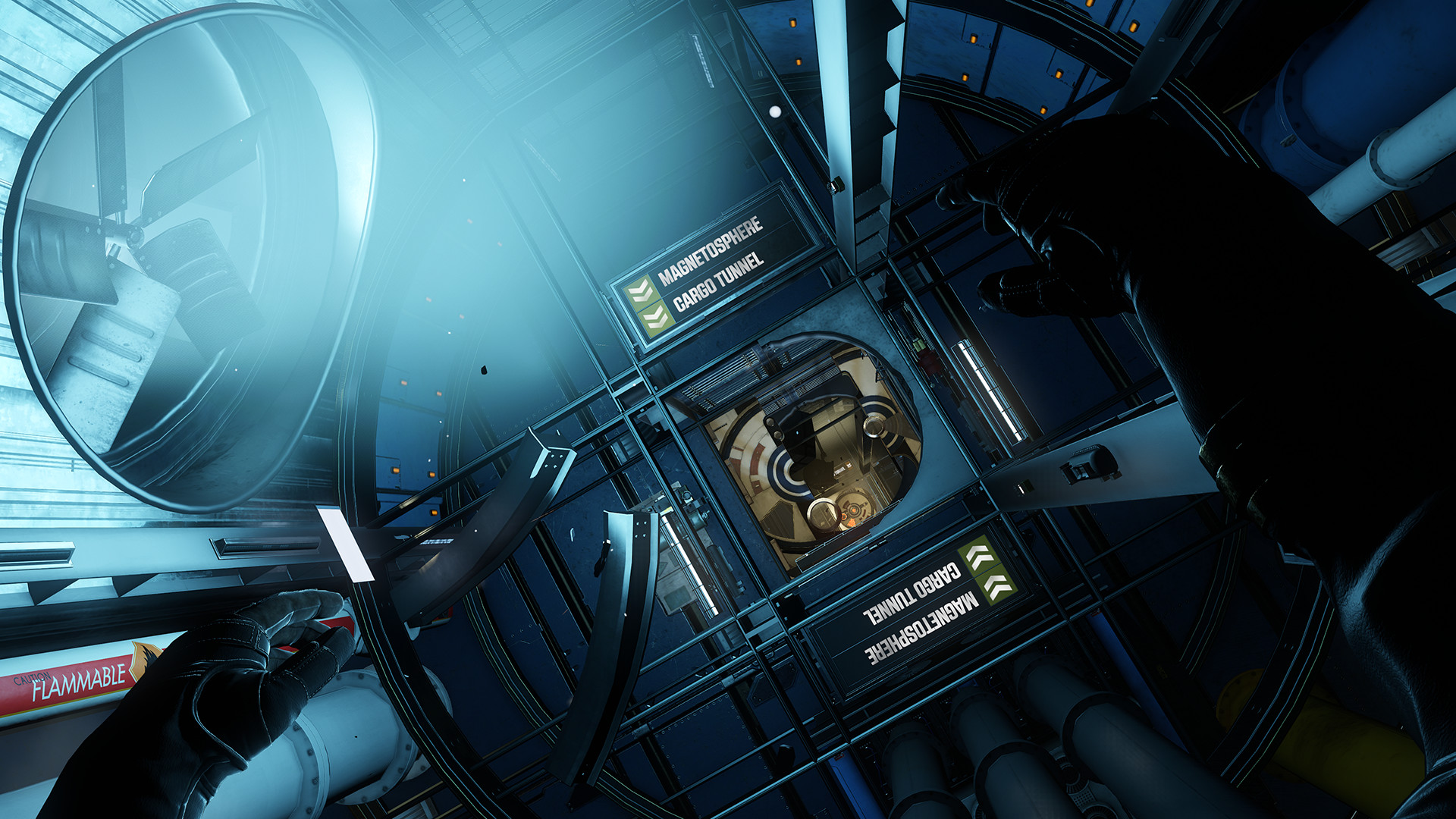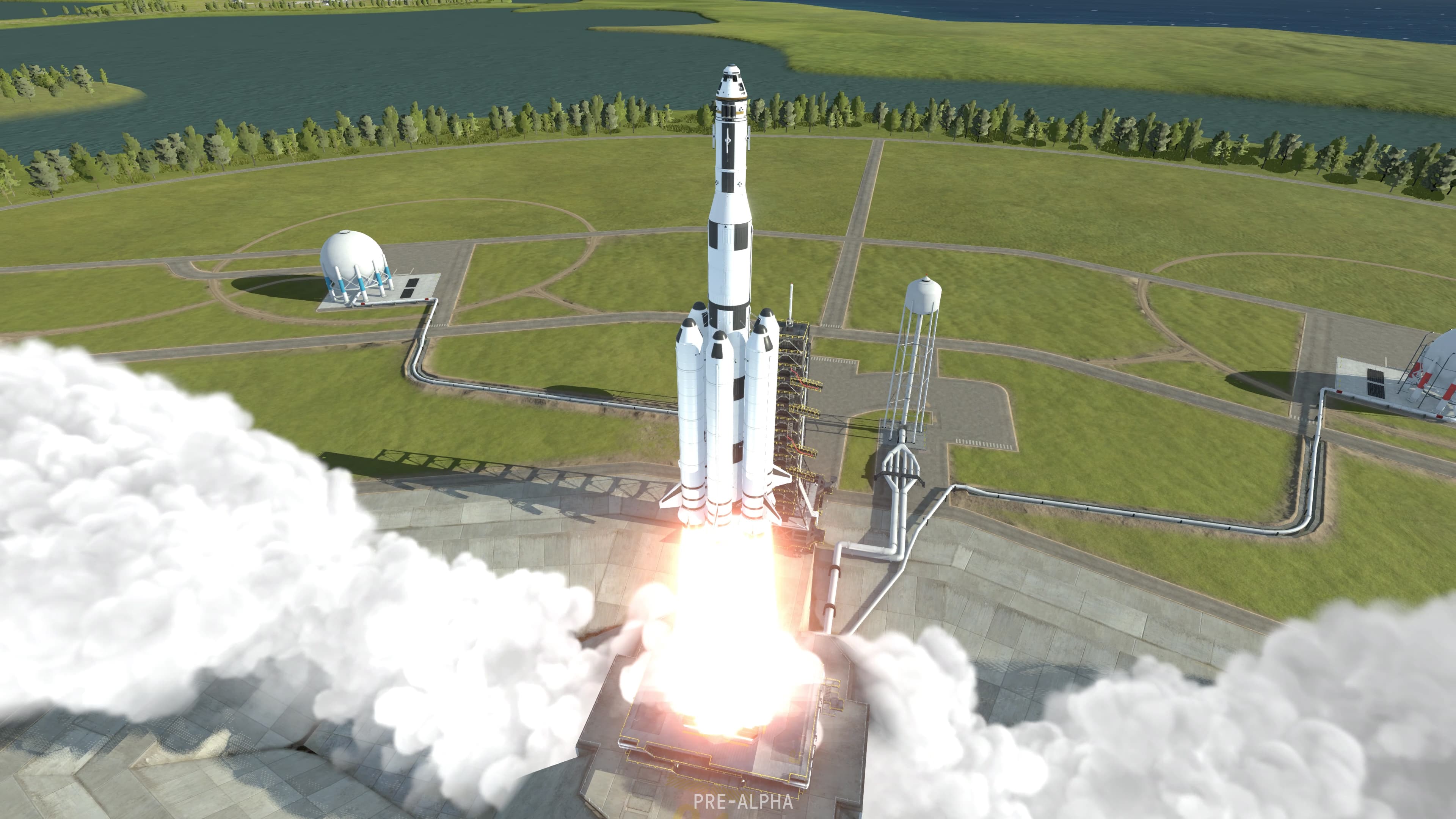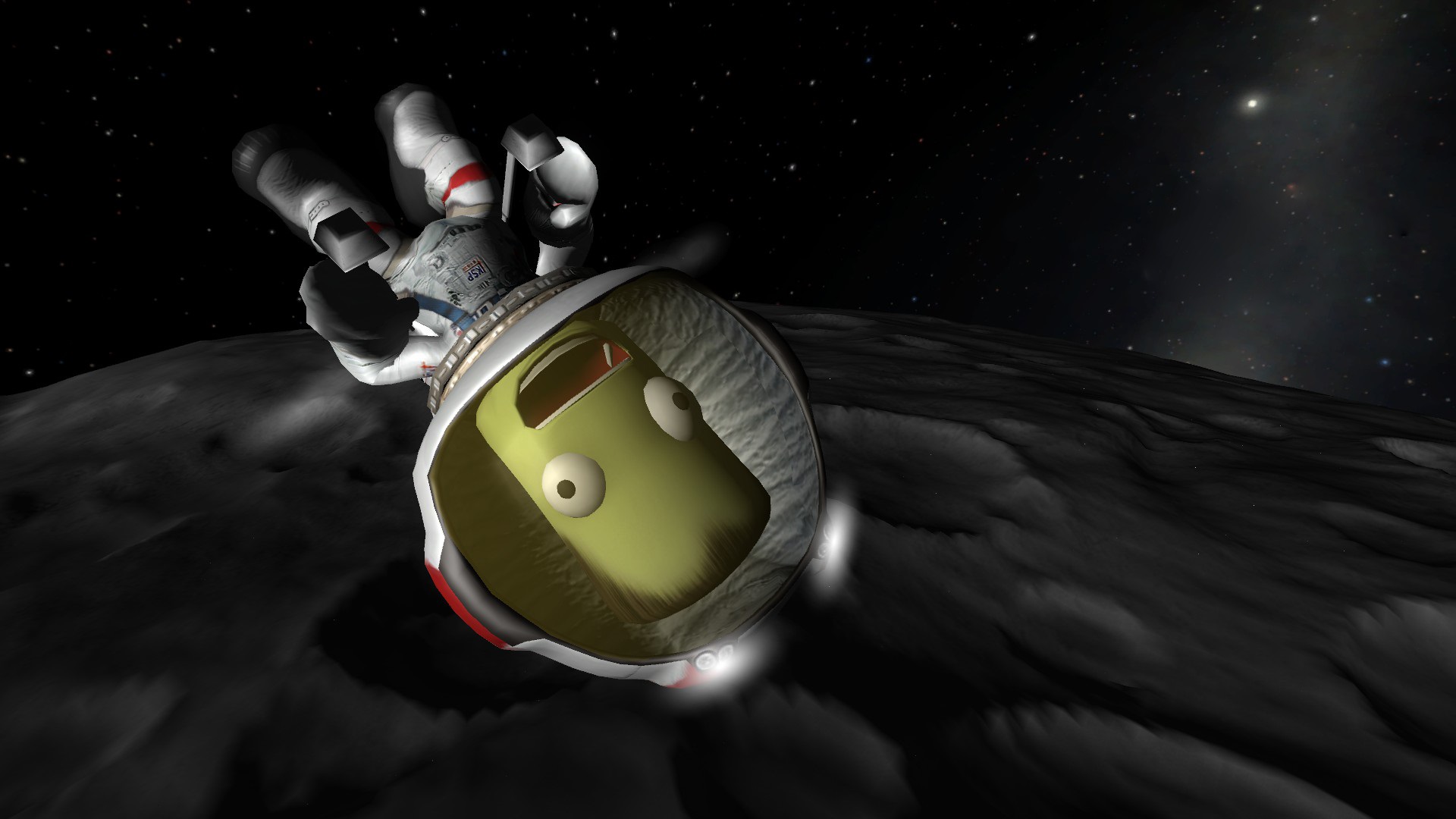Defying gravity: How video games play with gravity and zero-g
Float on over here as we look at some of the most interesting uses of gravity and weightlessness in video games.

Fifty years ago, a cutting-edge representation of the virtualized laws of physics premiered with Pong and its two-dimensional ball and paddles. Since then, games have reached for more of the world to subsume, abstract, and virtualize. They've iterated upon models for its physical systems to create more immersive worlds in which to play, and modern game development tools include abstracted versions of gravity as boilerplate. Clever smoke and mirrors fuse with complex computational models to render a vision of the world that is recognizable not just visually, but physically. We move in the virtual world as we would expect to move in the real one.
Even before games reached for the physics of the terrestrial world, though, they reached for the stars. Asteroids, Space Invaders, and countless other arcade cabinets drew from science fiction for their settings, and the enthusiasm for sci-fi in the medium persists today.
And while simulating gravity's behavior on Earth may be commonplace for games nowadays, the physical laws and constraints we're accustomed to are unrecognizable in the void of space. The rules are reinterpreted, and when it comes to our intuitive understanding of physics, Earth may as well exist in a vacuum.
Games are in a unique position to leverage the alienness of cosmic gravity to create something both new and educational for players. Embracing space opens up avenues for creativity in environmental design, puzzle design, combat, and traversal mechanics that demand equal creativity and adaptation. In other words: new rules can translate into novel play. We've picked out some of the best space games that do interesting things with gravity.
Using microgravity to your advantage in Prey (2017)
Novel play needs a novel playground, and the G.U.T.S. (Gravity Utility Tunnel System) of the orbital research station Talos 1 fills the role well. This winding network of microgravity tunnels is one of the more scenic routes researcher-turned-survivor Morgan Yu is forced to take in the midst of the station's alien containment breach as the protagonist in Arkane Studios' 2017 release, Prey.
Most of the space station's areas resemble a blend of mid-century hotel and cutting-edge research lab; these habitable zones are complete with artificial gravity and oxygen, providing a familiar environment for the player to explore. The G.U.T.S. serve as a kind of shadow to these areas, an industrial, spartan zone lurking just beneath the surface. The effect is a strange marriage of habitats not unlike that of a cruise liner — a veneer of luxury over the practical machinery designed to take humanity into hostile territory.
While the game's first microgravity sequence — a spacewalk on the exterior of the Talos 1 — is an impressive set piece, it's actually in the G.U.T.S. of the Talos 1 that Prey's attention to setting becomes more apparent. Their inclusion in the game belies this care, illustrating that microgravity might serve as a convenience for certain aspects of space habitation, even if artificial gravity were to exist.
Breaking space news, the latest updates on rocket launches, skywatching events and more!
The tunnels are wide, cylindrical chambers, adhering to the reality of the space station's structure rather than human convenience. "Up" and "down" quickly become relative, thresholds are labeled to be read from any orientation, and the tunnels branch off in any direction. For such a contained environment, it's easy to get turned around and disoriented. That disorientation, though, feels appropriate for the unfamiliar, mind-bending conditions of microgravity.
The tunnel design is only one half of Prey's brilliance, however; the other half is the play itself. Morgan's environment suit is equipped with thrusters to traverse zero-g environments. Buttons to roll, ascend and descend join the control scheme, as do controls to accelerate and brake. A readout constantly tracks Morgan's speed; rather than simply starting and stopping, speed and trajectory are carefully adjusted.
These controls turn movement into a game of vectors. It's up to the player to make on-the-fly course corrections as Morgan drifts through the tunnels, accelerating and decelerating to roll and avoid dangerous collisions. The play is dizzying and fast-paced, and navigating in the extra dimension demands focus, doubly so when routes branch off in every direction and hazards like arcing electricity and alien swarms abound.
It can be frustrating and disorienting at times. Even so, Prey takes a shot at imagining spaces we might design without the constraints of gravity, and gives players complex controls to explore those spaces. That takes guts.
Battling the first law of motion in Heavenly Bodies
Under most circumstances, drifting helplessly out into space would be a terrifying prospect.
The tiny cosmonauts of Heavenly Bodies, a 2021 release from 2pt Interactive, though, don't seem to mind. Every miscalculated trajectory, fumbled tether, and explosive decompression is met with the same unconditional acceptance; the cosmonauts remain celestial buddhas, drifting out into space to a meditative soundtrack.
This ever-forgiving, relaxed atmosphere is a necessary balm to the devilish puzzles and challenges of the game. Equal parts cooperative puzzle game and simulation, Heavenly Bodies tasks players with guiding these zen cosmonauts through maintenance, assembly, and repair tasks aboard their space station. Realigning satellite dishes, fixing agricultural modules, and even mining asteroids are all on the to-do list. The real, hidden first task, though, is re-learning how to move.
The effect is satisfying, maddening and often hilarious — cosmonauts wantonly fling one another through modules and flail about in a bid to find something to cling onto as they drift past, all while calming music floats along in the background. The absurdity of it all is hard not to chuckle at, and it's at this intersection of lighthearted atmosphere and merciless physics that Heavenly Bodies' take on zero-g thrives. It drives home the strange rules of microgravity effectively and unapologetically, and demands that players learn them.
The whole game revolves around gravity — or lack thereof. The station in Heavenly Bodies, much like our modern orbital platforms, is devoid of gravity, and the game's protagonists don't have the benefit of a propulsion system. Without a way to reliably maneuver, the cosmonauts are at the mercy of microgravity; moving through the space station to reach each mission goal is a challenge in and of itself, especially on the game's most difficult mode, "Newtonian", which sticks as close to realism in its physics as possible.
To grapple with zero-g, the game provides a unique control scheme: players manipulate their avatar's arms and hands independently, grasping, swinging, and releasing to fling themselves around the station or to brace themselves against two points in order to apply force. A task as simple as opening a sliding door becomes play in this context, where bracing against a wall with one hand and flinging the door open with the other requires a new kind of dexterity and coordination.
Tools can be clipped to the 'nauts' belts, and tethers can be attached for safety and some limited maneuverability. Even so, failure to carefully plan and consider before acting will more often than not leave a player flailing helplessly on the interior of a larger room, or floating out into the void. There's some sideways thinking involved in the puzzles, too — microgravity means the ability to manipulate much larger structures and leverage physics in new ways.
Escaping gravity's clutches in Kerbal Space Program
If the cosmic interpretations of physics can turn something as simple as opening a door into play, what about something as complex as literal rocket science? Developer Squad's Kerbal Space Program makes a compelling case in the affirmative.
Since its release in 2015, "KSP" has garnered a rare dual endorsement from gamers and the scientific community alike. Its near-universal acclaim from critics and praise from spacefaring organizations NASA and the ESA makes it potentially the best example of a game dabbling in the physics and mechanics of space simulation and orbital mechanics. The ESA even partnered up with KSP to recreate the ESA's BepiColombo and Rosetta missions in the game.
The titular "Kerbals" are tiny green bipedal creatures with ridiculous grins and bulging eyes, and it’s these little goofs that'll be venturing into the stars in player-created rockets according to player-charted trajectories. The goal is to explore a solar system that bears resemblance to our own, overcoming all of the challenges involved in reaching out beyond the atmosphere of the Kerbal home planet, Kerbid.
KSP is notoriously — if appropriately — difficult. The game makes few abstractions, and demands a real understanding of gravity and the physics involved in escaping a planet's gravitational well - and that's just to achieve orbit. Reaching out to other celestial bodies will mean slingshotting around planets and moons to make efficient use of fuel, managing momentum through orbits, and plotting the right courses. That's the secret of the Kerbal Space Program — it's impossible not to absorb a better understanding of gravity and space while playing the game.
Mistakes are frequent and catastrophic, successes triumphant, and the whole struggle underscores the achievements of the real-world scientists and engineers who've taken us to the stars.
It's also worth noting that, while the original game remains an experience worth playing through even seven years past its original release, a sequel is scheduled to launch through Steam's Early Access program on February 24, 2023. We'll be covering Kerbal Space Program 2 in a lot more detail in the next couple of months, as it's one of our most anticipated upcoming space games.
Sam LeBlanc is a senior developer at New Media Campaigns in Carrboro, North Carolina. He studied Music Education and Computer Science at the University of North Carolina at Greensboro, before leaving school early to pursue a full-time career in programming. From the start of his education in web development, he was leveraging his skills to write about games, eventually founding, developing, and designing Main Menu Reviews, an early attempt at non-profit, volunteer game reviewing. His interest in gaming criticism stems from two and a half decades in the hobby, kicked off when he was five years old with a copy of Yoshi's Island and a Super Nintendo.
Nowadays, he co-hosts Under One Thousand (https://www.underonethousand.com), a newsletter and podcast venture which he co-created. Under One Thousand focuses on highlighting niche indie games and developers, hosting discussions about games with experts, and weekly game recommendations.





